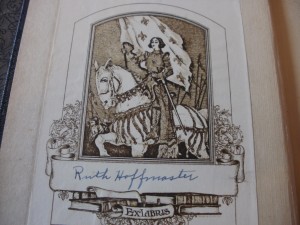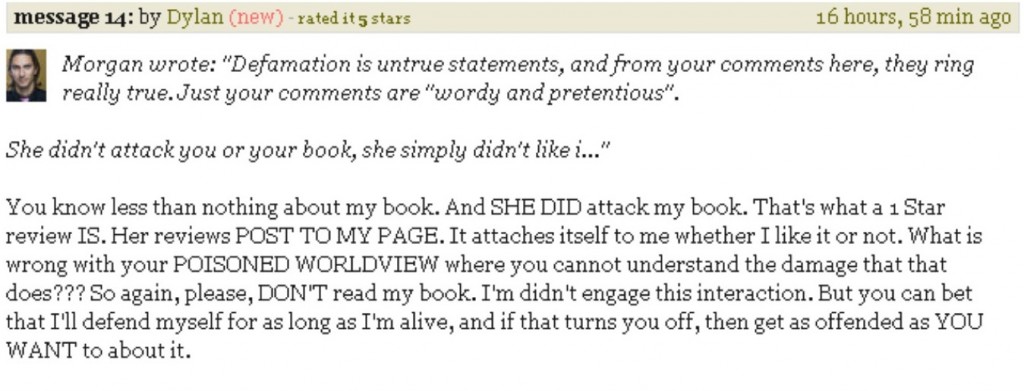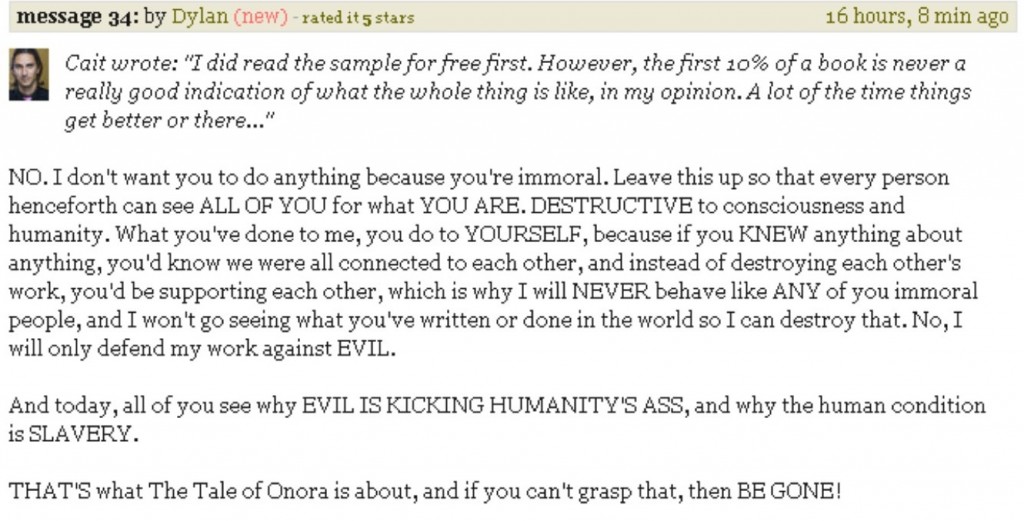 Libraries are living institutions, and that’s as unerringly true whether they’re public lenders or personal collections. In either case they’re bound to grow, as long as people care enough to nurture them.
Libraries are living institutions, and that’s as unerringly true whether they’re public lenders or personal collections. In either case they’re bound to grow, as long as people care enough to nurture them.
But they retract, too. Or shed, you might say. Volumes become redundant or go unread, they gather dust for a bit until space is needed. And then they have to go.
In a just world, they’d never be destroyed, but this world of ours has never been just. Books are burned everywhere, every day (and yes, your public library does it too), and somehow it stings more to hear of it happening for these most mundane, most utilitarian reasons. But fortunately, that’s not always the ex libris fate.
Ex Libris: from the library. Think of it as the taxonomic name for a second-hand book. If you buy used books ( firstly, thank you), you surely have some awareness of their history, the meandering path they took to arrive on your shelf. They might have originated as public-library volumes or as personal property; you checked the inside covers, probably before you even purchased them, and you saw. You touched upon that history.
firstly, thank you), you surely have some awareness of their history, the meandering path they took to arrive on your shelf. They might have originated as public-library volumes or as personal property; you checked the inside covers, probably before you even purchased them, and you saw. You touched upon that history.
◘
The personal brandings you find are nothing less than enchanting. I’ve talked before at length on marginalia, but this isn’t quite the same thing. I’m speaking here of the way people mark their books as their own—from simply inking their names in, to much more elaborate rites. It must have been for their own edification, mostly, and to remind trusted friends of to whom borrowed books must be returned. Whatever the long-lost motive, I’m forever finding handwritten and glued-in colophons that in themselves contribute to our precious body of  literature and art…
literature and art…
◘
◘
◘
◘
◘
◘
◘
◘
◘◘
You can learn a bit, unexpectedly, about people so far removed that you can be sure you’ll never meet them. Not always just their names, but also sometimes something of their character—that’s how I met Harlan Gano, in my own way, and found that not only did he have an unconventional way of signing his name, he was also rather impish in shaming would be thieves:

◘
And there’s wider and deeper history to be had, like in a schoolbook from the twenties from P.S. 61 in Manhattan. Was ‘Josephine’ an especially popular name there and then? Was the neighborhood predominately Italian? All I have are these sparse and captivating clues…
Manhattan. Was ‘Josephine’ an especially popular name there and then? Was the neighborhood predominately Italian? All I have are these sparse and captivating clues…
◘
◘
◘
 ◘
◘
But then, sometimes more exact evidence is presented, and more distant history is accessible. I can’t say for certain that it’ll ever benefit me to know that John L. Benitz was studying rhetoric in his higher English class in Pittsburgh on the 10th of January, 1885…but I like knowing it regardless.
◘
◘
Not all history is equally alluring, though. Take as evidence this volume of Hamlet—soaring literature that belongs to us all, as a cultural birthright. Yet at one time even books, even the best books, supplemented disharmony and inequality:

All of that, the gripping and the regrettable—that’s why I’m a collector. Books don’t just tell stories, they are stories. The books I collect found their way from someone else’s library to mine, and brought with them their own tales. It doesn’t matter much if I can decode those narratives, in whole or even in part. It just matters that they’re there.
are stories. The books I collect found their way from someone else’s library to mine, and brought with them their own tales. It doesn’t matter much if I can decode those narratives, in whole or even in part. It just matters that they’re there.
◘
As for branding my own books, inking in my own name or some little part of my own story, I rarely do that. I’m not really sure why. Maybe I just think that my personal history is insignificant compared to the longer, more varied journeys the books will travel, should the stars align and they be permitted to do so. Only on the rarest occasion have I marred books (never feeling right about it); I’ve made a few art books, for instance. But in doing so I’ve always been compelled to somehow honor their histories. This one, for example, had years earlier been discarded by the Akron Public Library. The vestiges of that needed to be integrated into the final product:

I have to allow, though, that Ex libris and This book belongs to and even I stole this book from weren’t put there for my enjoyment, but were rather affirmations of value. As someone who counts his wealth in books, I get that. Marking a book as one’s own might perhaps preserve and protect its ownership for a while, but sooner or later it’s going to end up where it’s going to end up. I might value my books, but much more than that, I respect their fate.
If I truly needed to safeguard a book from sticky fingers, however, I might instead of writing my name it, try out the effectiveness of a certain incantation I’ve recently learned was used to protect medieval books from “him that stealeth, or borroweth and returneth not, this book from its owner“…
Let him be struck with palsy, and all his members blasted. Let him languish in pain crying aloud for mercy, and let there be no surcease to his agony till he sing in dissolution. Let bookworms gnaw his entrails…and when at last he goeth to his final punishment, let the flames of hell consume him forever.
 When in the Course of human events….
When in the Course of human events…. And for the support of this Declaration, with a firm reliance on the protection of divine Providence, we mutually pledge to each other our Lives, our Fortunes and our sacred Honor.
And for the support of this Declaration, with a firm reliance on the protection of divine Providence, we mutually pledge to each other our Lives, our Fortunes and our sacred Honor.
 Evolution takes time, and all that America has needed to evolve toward equality and inclusiveness is time. We’ve needed time to nurture a generation that’s willing to judge people based on who they are, versus what they look like or who they love. And we’ve needed at least as much time to retire the divisive generations who’ve come before.
Evolution takes time, and all that America has needed to evolve toward equality and inclusiveness is time. We’ve needed time to nurture a generation that’s willing to judge people based on who they are, versus what they look like or who they love. And we’ve needed at least as much time to retire the divisive generations who’ve come before. A week ago we saw the Confederacy, at long last (and spurred on by the most horrific of
A week ago we saw the Confederacy, at long last (and spurred on by the most horrific of 

 valedictory EP, Metal Knight, just last year.
valedictory EP, Metal Knight, just last year.

 Dylan is, as he says, an indie author. Many of us
Dylan is, as he says, an indie author. Many of us  Defensiveness is one thing. This…rises to another level entirely. And it went on and on, dozens of entries. Sometime in the last 24 hours or so Dylan seems to have had a moment of clarity, and deleted everything. But here’s the thing about the internet, of which you and I are painfully aware but of which Dylan Saccoccio seems startlingly ignorant: nothing goes away. Not only is his meltdown epically viral, it’s also
Defensiveness is one thing. This…rises to another level entirely. And it went on and on, dozens of entries. Sometime in the last 24 hours or so Dylan seems to have had a moment of clarity, and deleted everything. But here’s the thing about the internet, of which you and I are painfully aware but of which Dylan Saccoccio seems startlingly ignorant: nothing goes away. Not only is his meltdown epically viral, it’s also  Whew. Though I have my doubts that our fate as a species is dependent on one particular self-published fantasy novel, I’ll admit that I haven’t read it and should therefore withhold judgment. I have read (or tried to read) the sneak-peek available on Amazon—wordy and pretentious are pretty spot-on descriptors. Throw in not-very-well edited, and we do not have a recipe for literary success.
Whew. Though I have my doubts that our fate as a species is dependent on one particular self-published fantasy novel, I’ll admit that I haven’t read it and should therefore withhold judgment. I have read (or tried to read) the sneak-peek available on Amazon—wordy and pretentious are pretty spot-on descriptors. Throw in not-very-well edited, and we do not have a recipe for literary success.  Careful what you upload to Instagram. You just might wind up an inadvertent and uncompensated collaborator to serial fauxtographer, Richard Prince.
Careful what you upload to Instagram. You just might wind up an inadvertent and uncompensated collaborator to serial fauxtographer, Richard Prince. the Gagosian Gallery, consisting of poster-sized reprints of other people’s Instagram uploads, garnered without permission or attribution. They were transformed into “Prince originals” by his pithy inclusion of creepy comments, and in some cases, just an emoji or two. The photography itself (and it must be said—some of it is quite good) is purely the result of the original owners’ talent; it’s just too bad they’re not benefiting from the $90,000 price tags Prince is hanging on their work.
the Gagosian Gallery, consisting of poster-sized reprints of other people’s Instagram uploads, garnered without permission or attribution. They were transformed into “Prince originals” by his pithy inclusion of creepy comments, and in some cases, just an emoji or two. The photography itself (and it must be said—some of it is quite good) is purely the result of the original owners’ talent; it’s just too bad they’re not benefiting from the $90,000 price tags Prince is hanging on their work. There are critics, mostly ones who mistake frankness for debauchery, who think that art and morality are mutually exclusive. True enough, ethics are a philosophical minefield, one much too combustible for this space. But right-minded people, which I have to think includes most of us, instinctively understand the natural law of
There are critics, mostly ones who mistake frankness for debauchery, who think that art and morality are mutually exclusive. True enough, ethics are a philosophical minefield, one much too combustible for this space. But right-minded people, which I have to think includes most of us, instinctively understand the natural law of 

 Just over a year ago the Andy Warhol Museum
Just over a year ago the Andy Warhol Museum  alphabetically antecedent to Apple), during which he created a computer-assisted portrait of Debbie Harry—and this was, he claimed at the time, his first ever hands-on experience with a computer.
alphabetically antecedent to Apple), during which he created a computer-assisted portrait of Debbie Harry—and this was, he claimed at the time, his first ever hands-on experience with a computer. Thus for the past year the world has been in possession of Warhol digital artworks that very nearly evaded us. No one would mistake them for his best work—they’re unmistakably low-res, clearly created in the shaky, early days of the medium. They’re also unmistakably Warhol: playful, colorful, topical. Why, there’s even a
Thus for the past year the world has been in possession of Warhol digital artworks that very nearly evaded us. No one would mistake them for his best work—they’re unmistakably low-res, clearly created in the shaky, early days of the medium. They’re also unmistakably Warhol: playful, colorful, topical. Why, there’s even a 

 Hat tip and thanks to online comedy purveyors
Hat tip and thanks to online comedy purveyors  Libraries are living institutions, and that’s as unerringly true whether they’re public lenders or personal collections. In either case they’re bound to grow, as long as people
Libraries are living institutions, and that’s as unerringly true whether they’re public lenders or personal collections. In either case they’re bound to grow, as long as people  firstly, thank you), you surely have some awareness of their history, the meandering path they took to arrive on your shelf. They might have originated as public-library volumes or as personal property; you checked the inside covers, probably before you even purchased them, and you saw. You touched upon that history.
firstly, thank you), you surely have some awareness of their history, the meandering path they took to arrive on your shelf. They might have originated as public-library volumes or as personal property; you checked the inside covers, probably before you even purchased them, and you saw. You touched upon that history. literature and art…
literature and art…

 Manhattan. Was ‘Josephine’ an especially popular name there and then? Was the neighborhood predominately Italian? All I have are these sparse and captivating clues…
Manhattan. Was ‘Josephine’ an especially popular name there and then? Was the neighborhood predominately Italian? All I have are these sparse and captivating clues…

 are stories. The books I collect found their way from someone else’s library to mine, and brought with them their own tales. It doesn’t matter much if I can decode those narratives, in whole or even in part. It just matters that they’re there.
are stories. The books I collect found their way from someone else’s library to mine, and brought with them their own tales. It doesn’t matter much if I can decode those narratives, in whole or even in part. It just matters that they’re there.
 It might be the bane of librarians, but after a certain interval
It might be the bane of librarians, but after a certain interval  UV light. It’s become apparent that throughout its long life, the book has been constantly amended by owners and readers, with commentary, verse, even doodles added to the margins. It is believed that the additions were assiduously scrubbed away, probably with pumice, sometime in the 16th century. But enough ink had seeped into the vellum that, although it was invisible to the naked eye, it proved to uncoverable with modern technology. Translation and study are ongoing, but thus far researches have found images of fish
UV light. It’s become apparent that throughout its long life, the book has been constantly amended by owners and readers, with commentary, verse, even doodles added to the margins. It is believed that the additions were assiduously scrubbed away, probably with pumice, sometime in the 16th century. But enough ink had seeped into the vellum that, although it was invisible to the naked eye, it proved to uncoverable with modern technology. Translation and study are ongoing, but thus far researches have found images of fish and human faces (the first glimpses of which they described as “
and human faces (the first glimpses of which they described as “
 A bonfire in Northern Ireland is an event heavy with meaning. In recent times they’ve been as sectarian as most other things in life there: Loyalists tend to hold theirs in July, using them to commemorate the
A bonfire in Northern Ireland is an event heavy with meaning. In recent times they’ve been as sectarian as most other things in life there: Loyalists tend to hold theirs in July, using them to commemorate the  intricately carved
intricately carved  visited the Temple.
visited the Temple. The muse presents herself exactly as she wills, and to trying to predict what inspires artists is certain folly. It’s the will o’ the wisp, inspiration is, and difficult though it is to chase and capture, that very elusiveness is the soul of its value.
The muse presents herself exactly as she wills, and to trying to predict what inspires artists is certain folly. It’s the will o’ the wisp, inspiration is, and difficult though it is to chase and capture, that very elusiveness is the soul of its value.